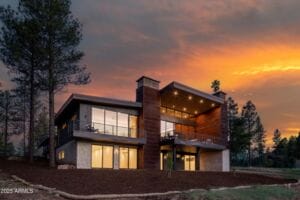A recent survey that polled global office workers concluded that roughly 70% of professionals spend at least one day working outside of the office.
That high number comes as no surprise given the fact that today’s newest generation of workers feels that 9 to 5, cubicle-based work environments are antiquated. In an effort to make young employees happier with the idea of working out of a traditional office, many companies have started modernizing their spaces.
As these efforts have been carried out, we’ve monitored the biggest modern office design trends that have emerged. Below, we’ve compiled today’s top trends into a brief list that we’re going to share with you business owners and curious workers out there!
1. Big Windows
Business owners don’t want their employees to feel trapped in their office. Feeling trapped increases angst which reduces productivity and heightens the odds that an employee will look for other work opportunities.
To create a more “free feeling” in work areas, employers have turned to large, wall-sized windows. These modern fixtures allow workers to always feel like they’re just steps away from the bustling community and fresh air that’s awaiting them outside.
2. Open Spaces
It used to be that every office was comprised of rows of high-walled cubicles. While cubes offer privacy to workers, they don’t necessarily promote collaboration. They also create a visual motif that screams “big corporation”.
In an effort to break down barriers between employees and again, create a more freeing atmosphere, businesses are starting to ditch cubes and in some cases, even walls.
Today’s modern office design showcases wide floor-plans with coworking desks, comfortable furniture and plenty of space to get up and walk around when workers feel like they’ve been sitting at their desks for too long.
3. Flexible/Collaborative Furniture
A company that’s set on being successful needs its team to be creatively inspired and capable of communicating with one another. Business owners are starting to realize that the furniture that they choose and that furniture’s arrangement can have a major impact on both of those ends.
Consequently, today’s companies advocate that employees move furniture to best suit their comfort and creative flow. Businesses are also investing more heavily in items like curved sofas that allow seated parties to look at one another.
4. Openly Bookable Meeting Rooms
For too long, meeting rooms have served as the playground for managers and higher-ups. This antiquated arrangement belittles coordinator-level employee’s need to catch up with team members privately and can inhibit their ability to come into themselves as leaders.
As such, modern office design leverages technology (something that we’ll talk more about in a moment) to empower employees at all levels to book meeting rooms whenever they need them.
5. Technological Integrations
An office that young people want to work out of is an office that is strewn with technology.
We’re talking meeting rooms that feature large screens capable of accepting screencasts, access to all files and applications in the cloud and tasteful implementation of voice recognition that streamlines everything from getting a cup of coffee to creating reminders.
6. Hot Desks/No Desks
People have had to deal with being assigned a desk since kindergarten. The last thing that they want coming out of college is to be told the exact spot that they’ll need to work from for possibly the next 40+ years of their career.
This is why offices are abandoning assigned office seating in favor of hot desks and no desks.
Hot desks mean first come, first serve seating in any one of the ample desks that are strewn across an office. No desks is when there are enough sofas, recliners and other forms of alternative seating available that employees can ditch working at a desk altogether.
7. Quiet Zones
One of the major drawbacks of large, open and collaborative office spaces is that chatter is at a premium. This can present a big problem to members of your team that need a quiet place to push through a tough workday from.
Quiet zones are being introduced as a way for offices to enjoy the best of both worlds.
You can go big with your quiet space ambitions by creating a large, in-office library. You could also go smaller by simply designated various rooms in your office as “no talking zones”.
8. Decompression Areas
Burn-out is creativity’s biggest enemy. The second that your employee is feeling their brain pounding in their skull, rather than making them feel as though they should push through, a modern office offers them the opportunity to take a breather in a decompression area.
Decompression areas are recreational rooms. They allow employees to spend a few minutes playing ping-pong or doing similar activities.
Some companies are concerned that decompression areas could lead to time abuse. Organizations that embrace this modern office design staple are finding that their team’s productivity gains and happiness outweigh downsides.
9. Digital Offices
The most modern office innovations is not having an office at all. We’re seeing more and more teams opt into virtual office providers like Hoxton Mix to maintain a business address. They then use tools like Slack to collaborate and work 100% online.
Working digitally can save your company massive office lease costs. If your team isn’t ready to be productive online and your transition to a digital office too soon though, it could end up costing you in work output.
Today’s Modern Office Design Trends
Companies are turning to modern office design trends to make their employees happier and their offices more stylish.
Hopefully, our write up has given business owners some direction on how they can improve their workspaces. We also hope to have given employees ideas of what to look for in their next place of employment.
Want additional information on everything from business to lifestyle issues that impact the people of Arizona? If you do, check out our website today.




